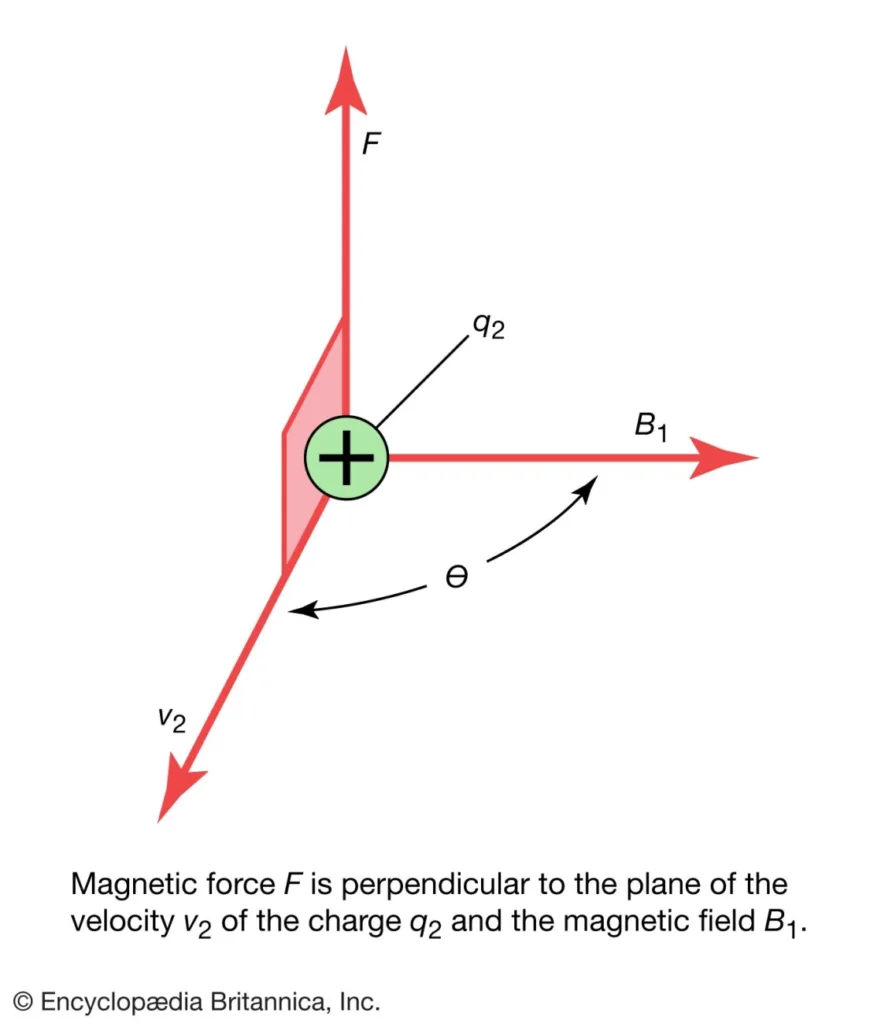The Basics What Exactly Is Magnetic Force

magnetic force
Magnetic force is a fundamental force that causes attraction or repulsion between objects due to the motion of charged particles within a magnetic field, often called a B-field. Simply put, when charged particles like electrons move through a magnetic field, they experience a force that can push or pull them depending on their direction and speed.
Key properties of magnetic force include:
- It is always perpendicular to both the velocity of the moving charge and the magnetic field.
- The force is zero if the charge is stationary or moving parallel to the magnetic field lines.
Imagine a charged particle flying through invisible magnetic field lines. The force it feels isn’t just along its path or the field—it acts at a right angle to both. To visualize this, the right-hand rule is an effective tool: point your fingers in the direction of the velocity, your palm toward the magnetic field, and your thumb will show the direction of the magnetic force.
High-quality materials play a crucial role in harnessing consistent magnetic force in real devices. Suppliers like NBAEM provide precision-engineered magnets that help maintain reliable force levels, ensuring the performance of motors, sensors, and other magnetic applications.
The Science Behind Magnetic Force Formula and Physics Principles

At the heart of magnetic force is the Lorentz force equation:
F = q (v × B + E)
Here’s what each part means:
- F is the force experienced by the particle
- q is the electric charge of the particle
- v is the velocity, or the speed and direction, of the charged particle
- B is the magnetic field
- E is the electric field component
The magnetic force specifically comes from the cross-product v × B, which means the force is always perpendicular to both the particle’s velocity and the magnetic field lines. This is why stationary charges or charges moving parallel to the magnetic field don’t feel a magnetic force.
Experiments with charged particles, like electrons, show that the magnetic force depends on:
- The particle’s charge
- How fast it’s moving (speed)
- The angle (θ) between velocity and magnetic field, with the force proportional to sin θ (zero when velocity is parallel or anti-parallel to the field)
This relationship explains why a particle moving straight along the field line doesn’t experience a force, but if it moves across, the force kicks in.
It’s important not to confuse magnetic force with electric force. While electric force acts directly on charges regardless of motion, magnetic force only acts on moving charges and depends on their direction relative to the magnetic field. Magnetic field strength, measured in teslas (T), quantifies how strong the magnetic environment is around the charge.
Understanding this vector nature of magnetic force helps in applications like electric motors and particle accelerators, where control of moving charges through magnetic fields is key. For more on magnetic fields and materials, check out magnetic technologies.
How Magnetic Force Works in Action Real World Examples
Magnetic force plays a big role in many places around us, especially where moving charges and electric currents are involved.
On Moving Charges
When charged particles move through a magnetic field, they feel a force that changes their direction. This is the principle behind particle accelerators that scientists use to study tiny particles, and also explains how cosmic rays from space get bent as they hit Earth’s magnetic field.
On Currents
Electric currents in wires experience magnetic force too. The formula for this is F = I (L × B), where I is the current, L is the wire length, and B is the magnetic field. This force is the foundation of motors and generators that power everything from your household appliances to industrial machines.
Everyday Demos
You can see magnetic force in action daily:
- Compass needles align with Earth’s magnetic field
- MRI machines use magnetic fields for detailed body scans
- Speakers rely on magnetic force to turn electrical signals into sound
Local Relevance
With the rapid rise of electric vehicles (EVs) in the U.S. and China, magnetic force in neodymium motors is more important than ever. Companies like BYD and Tesla’s Shanghai factory use powerful rare earth magnets to create efficient, responsive motors that drive the EV boom. High-quality magnet materials ensure these motors deliver consistent force for smooth performance and reliability on the road.
Advanced Insights Magnetic Force in Materials and Fields
Magnetic force interacts differently depending on the material involved. Here’s a quick look at the main types:
- Ferromagnetism: Materials like iron strongly attract magnetic fields, creating a powerful magnetic force. This is the basis for permanent magnets.
- Paramagnetism: These materials are weakly attracted to magnetic fields but don’t retain magnetism without an external field.
- Diamagnetism: Materials that slightly repel magnetic fields, showing the weakest interaction.
When it comes to producing magnetic fields, there are two main players:
- Permanent magnets, such as those made from rare earth materials like neodymium-iron-boron (NdFeB), provide a strong, constant magnetic force without needing power.
- Electromagnets generate magnetic fields through electric current, giving more control but requiring energy.
To measure magnetic force precisely, tools like Hall effect sensors are common. They detect magnetic field strength, usually measured in teslas (T). Force itself is measured in newtons (N), while magnetic field strength units like oersteds (Oe) may also be used depending on the context.
Top-quality materials matter here, too. NBAEM supplies precision-engineered magnets that deliver consistent and reliable magnetic force for demanding industrial uses. Their rare earth magnets, for example, are built to optimize force output, ensuring devices work smoothly and efficiently for U.S. manufacturers relying on high performance.
Applications and Innovations Where Magnetic Force Powers the Future
Magnetic force drives many of today’s essential technologies and is shaping the future of industries worldwide.
Industrial Uses
- Electric motors: Power everything from home appliances to electric vehicles, relying heavily on strong magnetic forces.
- Wind turbines: Use magnets to convert wind energy into electricity efficiently.
- Hard drives: Store data by manipulating magnetic fields on tiny disks.
Around 80 percent of the global supply of rare earth magnets, crucial for these applications, comes from China, highlighting how intertwined the magnetic force market is with this region.
Emerging Technologies
- Maglev trains: Use magnetic levitation to reduce friction and boost speeds dramatically.
- Quantum levitation: Pushing boundaries in physics, opening new possibilities for frictionless motion.
- Medical devices: MRI machines rely on magnets to create detailed images without radiation.
These innovations show how magnetic force isn’t just a basic concept—it’s a key to next-gen tech.
Challenges and Solutions
Supply chain issues can pose risks because rare earth materials and magnets are mostly sourced from a few places. Trusted suppliers like NBAEM help ease these vulnerabilities by offering consistent, high-quality materials and reliable delivery. Their precision-engineered magnets play a vital role in ensuring industrial stability and innovation continuity.
Get Custom Magnet Solutions
For businesses looking to optimize magnetic force in their products, NBAEM provides tailored solutions designed to meet specific performance needs. Visit their resources to learn how custom magnets can elevate your engineering projects and production lines.





[…] more on magnet basics and magnetic forces, check out NBAEM’s what is a magnetic force resource to better understand how these powerful tools […]